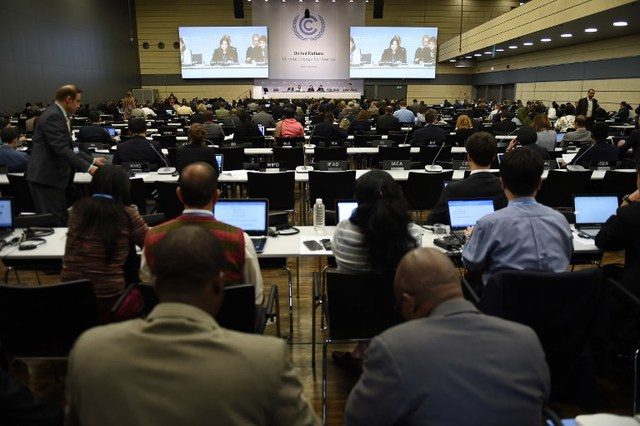SUMMARY
This is AI generated summarization, which may have errors. For context, always refer to the full article.

PARIS, France – 5 days of negotiations for a global climate agreement in Bonn this week underscored the deep divisions on how to reach the common goal of avoiding worst-case-scenario global warming scenarios.
The aim is to ink an agreement in Paris in December to limit global warming to two degrees Celsius (3.6 degrees Fahrenheit) over pre-Industrial Revolution levels.
These are the main divides:
Money, money, money
In 2009 rich countries pledged to mobilise $100 billion (90 billion euros) per year in climate finance for developing nations from 2020.
The money is to ease the shift from cheap and abundant coal to renewable energy sources (“mitigation” in climate jargon), and for shoring up defences against climate change impacts such as superstorms, drought and sea-level rise (“adaptation”).
But does private money count? And loans? What about money from fellow developing nations, multilateral agencies and development aid? Who qualifies for funding? How much of the money will go to mitigation, and how much to adaptation?
These are the questions widening a chasm between developing nations and rich ones, which are also resisting any finance obligation for them being written into the text.
A relatively new addition to the long list of disagreements: the world’s poorest nations demand payouts for climate change-induced “loss and damage”.
Slashing emissions
A pillar of the Paris agreement will be voluntary national pledges to reduce the greenhouse gas emissions blamed for global warming.
Commitments received so far place the world on course for warming beyond the safe level, science says. China, the United States and the European Union account for more than half of global emissions.
Countries agree that a mechanism is needed to periodically review, and improve, the pledges.
But how often will assessments take place? What form will they take, and who will do it? Will nations be obliged to improve on their earlier pledges, and how frequently?
Blame game
The talks are held under the auspices of a 1992 climate treaty which enshrined the principle of “differentiated responsibilities.”
It assumed that rich countries have polluted for longer, and bear a bigger responsibility for addressing the resulting problem – a distinction developing nations wish to retain.
But wealthy countries insist that much has changed since then, and nations once tagged “developing” have become big polluters in their own right as their economies and populations exploded.
China is now the world’s number one emitter of carbon pollution, overtaking the US, and India is number four after the EU.
How hot is too hot?
In 2010, signatories to the treaty set a goal of limiting global warming to two degrees Celsius (3.6 degrees Fahrenheit) over pre-Industrial Revolution levels.
But small island states and poor nations – which will get hit first and hardest by climate change impacts – are pushing for lower ceiling of 1.5 degrees Celsius.
Whether either goal is achievable, or sufficient, remains to be seen. – Rappler.com
Add a comment
How does this make you feel?
There are no comments yet. Add your comment to start the conversation.